By Alex Trukan
With many teams trying to overload central areas, playing with three central midfielders has become widely used. This often initiates a discussion on whether to play a triangle with a point up (two defensive midfielders) or point down (one defensive midfielder). Both of the shapes have certain strengths and weaknesses. However, whichever option is selected, having three central midfielders offers flexibility to adjust the shape. This means that all of the three players might be used in both more defensive or attacking roles depending on the situation. It might be, therefore, useful to be able to adjust the triangle throughout the game rather than pigeonhole players into certain roles. Viewing a midfield triangle in a more fluid way, will then allow the team to overload areas with a higher priority as well as for example mark certain opposition players that pose a bigger threat.
Playing with a point down provides more opportunities to screen the passes more effectively and have more players available to counter attack upon winning possession. It also provides more support for striker pressing the ball in the initial defending stages. The weakness are spaces just in behind the front two of the triangle. One player covering half spaces between the units can get easily overloaded by opposition wingers coming infield or attacking midfielders dropping into pockets.
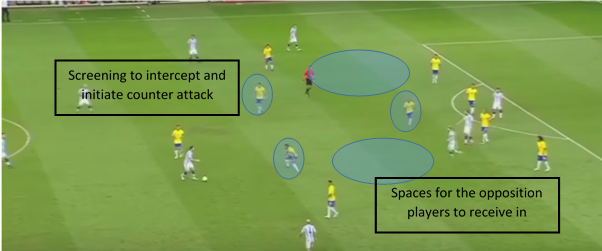
Being overloaded in half spaces in front of the back line poses a major threat as one defensive midfielder won’t be able to track two forward runners effectively. It also provides a great opportunity for the opposition to combine play and penetrate centrally. As the opposition players create a 2v1 situation against defensive midfielder, one of the midfielders positioned in more advanced areas should recognise the opportunity to drop back and form a triangle with a point up.
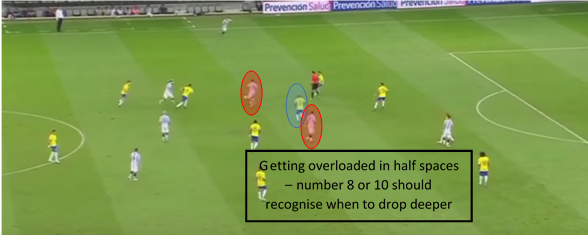
Adjusting the triangle might help to track forward runs into the penalty box as well as force the opposition to play out wide rather than through central areas. It also allows the centre backs to deal with strikers with less concern over opposition’s attacking midfielders getting into goalscoring positions.
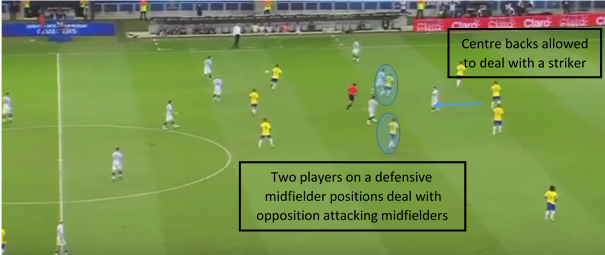
When one of the central midfielders drops into deeper positions, it will help the team in dealing with individual opposition player who pose a threat. Second defensive midfielder might therefore have a more flexible role with man marking orientation rather than working in a zone. The original defensive midfielder would be then looking to cover zonally and screen passes into opposition strikers.
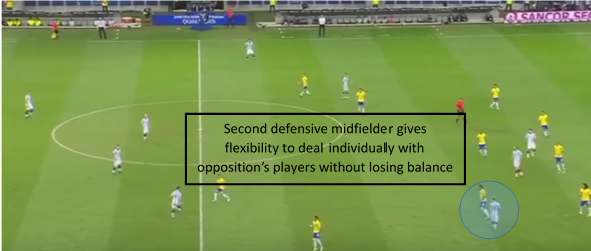
Adjusting into two players in a more defensive roles is also useful during transition to defence and when outnumbered. Two defensive midfielders together with centre backs will ensure sufficient protection of central areas what will then allow more freedom for centre backs to go forwards when attacking. Upon losing possession this will help in delaying the opposition and making sure full backs complete their recovery runs to get organised.
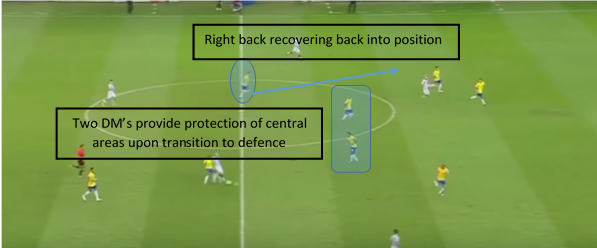
If central midfielders are able to recognise when to drop and form a 2-1 or 1-2 shape, it will allow one of the defensive midfielders to help the back line and track forward runners. This is especially evident when full backs are out of positions, opposition midfielders getting into the penalty box or the play is switched quickly from side to side. As one of the central midfielders drops between centre backs, the shape might look more like 5-2-3.
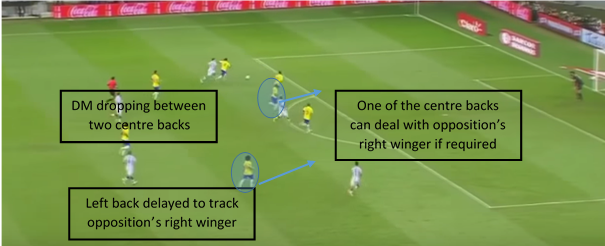
Having flexible responsibilities in midfield used to be associated with number 8 role as a ‘box to box’ midfielder. However, with teams trying to be more unpredictable, all three central midfielders should be now able to play a role on any positions in the triangle, both with a point up or down. Being intelligent rather than rigid, and recognising when and where defensive support is needed is a skill on demand.
By Alex Trukan, Development Coach, Nottingham Forest
@AlexTrukan


